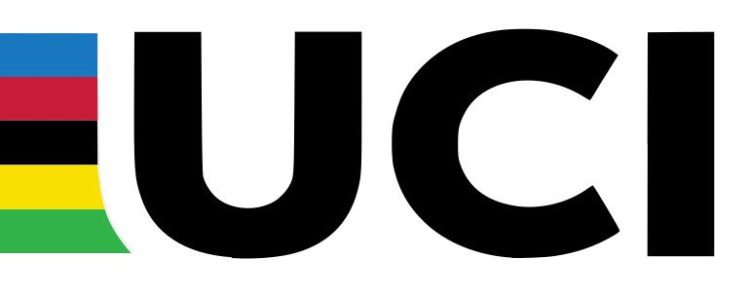Verification and MyWhoosh’s Approach
Over the years, there have been documented cases of cheating, across a broad range of sports, which has resulted in organisations such as the World Anti-Doping Agency (WADA) being created to tackle these challenges.
With the increase in popularity of Esports cycling, the Union Cycliste Internationale (UCI), the world governing body of cycling, recognised it as a discipline within its own right. It ratified this by sanctioning the first Esports World Championships, which was hosted on 9th December 2020.
To ensure fairplay, validity and an equal playing field in Esports racing, all riders are required to undergo verification. It is simpler to police athletes when they are competing in the same arena space, but it becomes more complex when spread across the globe and using different hardware.
What is verification and what does it mean?
In Esports, verification is the process of validating a rider’s performance to ensure any form of fraud is eliminated.
To simply, there are two levels of verification that can be considered – Basic and Advanced.
Basic verification involves checks being done at a fundament level, such as:
- Identification: Being who you say you are.
- Physical characteristics: Using your correct details for weight, height, and age.
- Connectivity: Connecting the smart trainer/smart bike, heart rate monitor, power meter to the Esports platform as intended.
- Data accuracy: Ensuring the smart trainer/smart bike, heart rate monitor, power meter are reading accurately and correctly, including dual-recording using a secondary power meter.
Advanced verification involves undertaking a more complex series of checks that include:
- Physical characteristics validation: Submitting weight, and height videos.
- Equipment validation: Following the defined processes for equipment validation as outlined by each platform.
- Adherence to process: In the case of MyWhoosh, completing the Power Passport tests, and assisting in validating performances by submitting additional data including undergoing live verification, if required.
Evolution of verification
As Esports cycling has evolved, so has the level of verification.
Early days: In its infancy, verification was simple and validation checks were done looking at whether your primary power reading supplied by your smart trainer, aligned to your secondary power reading, often supplied by power pedals. Other checks included if your heart rate was consistent, with no gaps in data which might otherwise indicate something untoward.
Today: As a consequence of increase in competition within the virtual cycling market, racing forms, and associated frauds, verification processes have evolved to become more robust, but subsequently more complex with Business Intelligence and Artificial Intelligence technologies being used to assist with the verification of data. In MyWhoosh’s case, they have gone a step further and are undertaking verification based on the athlete’s personal physiological blueprint which are formulated in what MyWhoosh has called the “Power Passport.” To race on MyWhoosh, a rider’s own data is recorded in their Power Passport which is used to validate their performance. If they exceed these data points, their results will be annulled.
About the Power Passport
The Power Passport is your personalised performance indicator and the central part of the categorization and verification process for MyWhoosh’s Esports cycling events. Having a Power Passport is a mandatory requirement to enter any competitive racing event on the platform.
To obtain your Power Passport, you have to undertake a dynamic assessment that surpasses traditional Functional Threshold Power (FTP) testing by evaluating multiple fitness aspects, identifying strengths and areas for improvement. This assessment is divided into challenging intervals which provides a means of MyWhoosh validating your race results are within acceptable parameters, based on your physiological performances.
To obtain the Power Passport also requires riders to video record themselves performing the MyWhoosh Power Passport Test, videos are reviewed and once validated a Power Passport document be issued, allowing you to race. It is a stringent measure, but ensures a level playing field.
How the Power Passport verification works
The Power Passport will calculate your predicted capabilities based on your tests and because of this, will need to be retaken every 3 months. The algorithms to calculate these parameters are a closely guarded secret, which have been developed by a team of leading world coaches.
The advantage of using recorded capabilities is that when you race, you will be allocated to the correct category according to your performance metrics. This is referred to as “dynamic categorization” which creates fair and competitive racing groups based on the available competitors.
When racing, data is processed in real-time by Business Intelligence and racers are identified if they are exceeding expected parameters. Everyone is subjected to undergo the same process, even the developer of the verification system and Race Control Manager, Matt Smithson. Matt explained that “on several occasions my results have been annulled. The first time my battery in my heartrate monitor failed midrace and the second was that I had swapped my Wahoo Speedplay power pedals from my bike on to my KickR bike and forgot to recalibrate and there was difference of 18% between my two power meters, so my results were annulled based on these anomalies.”
Results are analysed by a team and in cases where outcomes are marginal, an extra level of scrutiny is applied. This includes looking at the history of the rider’s data for example, reviewing their Strava statistics.
In cases where, despite this extra level of attention, a decision still cannot be reached, the rider is then invited to visit the MyWhoosh HQ in Abu Dhabi, to race. Their performance is then validated in real-time. So far, there have been 21 people invited to this process and only five have accepted the invitation. The cost of failure is high, with the possibility of being exposed as dishonest and being further disqualified from all races on numerous platforms.
Summing up and the future of verification
Across the Esports cycling industry, it would be beneficial if there was a standardised verification approach adopted. A co-ordinated strategy involving the different platforms needs to be formulated and implemented, led by the governing body, the UCI. It could be suggested that in much the same way that the World Anti-Doping Agency (WADA) was created to co-ordinate the fight against drugs in sports, an independent organisation needs to be set-up to implement a standard and independent approach to verification and support the platforms in its policing.
In terms of verification, MyWhoosh certainly has taken it to a new level, approaching it in an innovative way. The Power Passport is similar in design to the athlete’s traditional biological passport, which are used to compile profiles of biological indicators of doping and test results over time. Performance verification in traditional professional sports competition has provided a level playing field for riders to compete and it is this goal that MyWhoosh is trying to emulate in Esports cycling.
About the Author
Tim has a passion for cycling and it was integral to regaining fitness after an arduous battle with cancer. Tim is the founder of Mountain Massif, who host esports cycling events. Over the years, Tim has written about a range of cycling topics, including testing and reviewing the major smart trainers. In addition, he has been fortunate to ride and interview some of the sports leading figures such as Tour de France winner Andy Schleck and sprint legend André Greipel. Follow on Instagram @Mountain_Massif
Also read: What Is The Mywhoosh Power Passport?






















